Archives
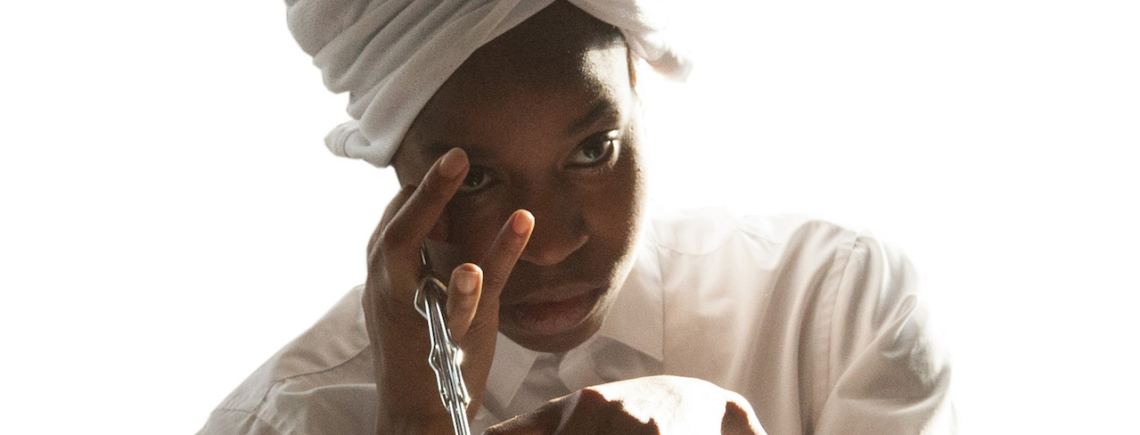
Dana Michel
Mercurial George
US PREMIERE
Thursday, January 5, 10:00pm
Friday, January 6, 8:30pm
Monday, January 9, 4:00pm – SOLD OUT*
Tuesday, January 10, 7:00pm – SOLD OUT*
* A waiting list will begin 30 minutes before each performance.
Run Time: 55 minutes
Abrons Arts Center, Experimental Theater
466 Grand Street / Tickets $20
Where does identity come from? How do you find it for yourself and how is it placed on you? How can one’s identity register or fail to cohere in relationship to objects, feelings and affectation?
In Mercurial George, Dana Michel is “wading through the hairy rubble of a preliminary anthropological dig” asking “What is the smell of a plethora of someones that you have been avoiding your whole life? What do you do with the body?” Through fragmented gestures, loose and loaded signifiers, sounds and songs, this solo work provides the “ground to test skins” of Michel’s identity; “ideas that may or may not have been imposed.”
Mercurial George was co-produced by Festival TransAmeriques, Tanz Im August, CDC Atelier de Paris-Carolyn Carson, ImPulsTanz, and Chapter with residency support from Usine C, Dancemakers, ImPulsTanz, Actoral/La Friche Belle de Mai, WOOP, CDC Atelier de Paris-Carolyn Carlson, M.A.I. Additional support from Conseil des Arts et des Letters du Québec, Canada Council for the Arts.
Dana Michel receives administrative/development support from Daniel Léveillé Danse company as a part of its sponsorship project.
Photo by Sammy Rawal
MERCURIAL GEORGE (trailer) from DANA MICHEL on Vimeo.
Dana Michel: Mercurial George from Marin Media Lab on Vimeo.
Conceived and Performed – Dana Michel
Lighting & Technical Direction – Karine Gauthier
Artistic Activators – Martin Bélanger, Peter James, Mathieu Léger, Roscoe Michel, Yoan Sorin
Sound Consultant – David Drury
Production – Dana Michel
Executive Producer – Marie-Andrée Gougeon for Daniel Léveillé Danse
Coproduction – Festival TransAmériques (Montréal), Tanz im August (Berlin), CDC Atelier de Paris-Carolyn Carlson (Paris), ImPulsTanz (Vienna), Chapter (Cardiff)
Creative Residencies – Usine C (Montréal), Dancemakers (Toronto), ImPulsTanz (Vienna), Actoral/La Friche Belle de Mai (Marseille), WOOP (Douarnenez), CDC Atelier de Paris-
Carolyn Carlson (Paris), M.A.I. (Montréal)
With The Support Of Conseil des Arts et des Lettres du Québec, Canada Arts Council
Dana Michel is a choreographer and performer based in Montreal. Before obtaining a BFA in Contemporary Dance at Concordia University in her late twenties, she was a marketing executive, competitive runner and football player. She is a 2011 danceWEB scholar (Vienna, Austria) and is currently an artist-in-residence at DanceMakers (Toronto, Canada) and at Usine C (Montreal, Canada).An amalgam of choreography, intuitive improvisation and performance art, her artistic practice is rooted in exploring identity as disordered multiplicity. She work with notions of performative alchemy and post-cultural bricolage – using live moments, object appropriation, personal history, future desires and current preoccupations to create an empathetic centrifuge of experience between her and her witnesses. Her previous solo Yellow Towel was featured on the “Top Five” and the “Top Ten” 2013 dance moments in the Voir newspaper (Montreal) and Dance Current Magazine (Canada) respectively. In 2014, she was awarded the newly created Implustanz Award (Vienna) in recognition for outstanding artistic accomplishments and was highlighted amongst notable female choreographers of the year by the New York Times. The year concluded with Yellow Towel appearing on the Time Out Magazine (New York City, U.S.) “Top Ten Performances” list.
“There is in Mercurial George a clarity of position that is rare. Dana Michel knows exactly where she is speaking from (as an artist; as a woman; as a Black person). She knows exactly where she performs.”
– Le Devoir, Montréal (Canada)
“Michel’s “Yellow Towel” was engrossing. Offbeat in the extreme, it cast an imaginative theater spell that recurrently evoked the great New York performance artists Eiko & Koma, while showing Ms. Michel’s intense individuality. (…) Every stammering noise, every strained movement demonstrated powerful imagination and psychological force.” – The New York Times (USA)
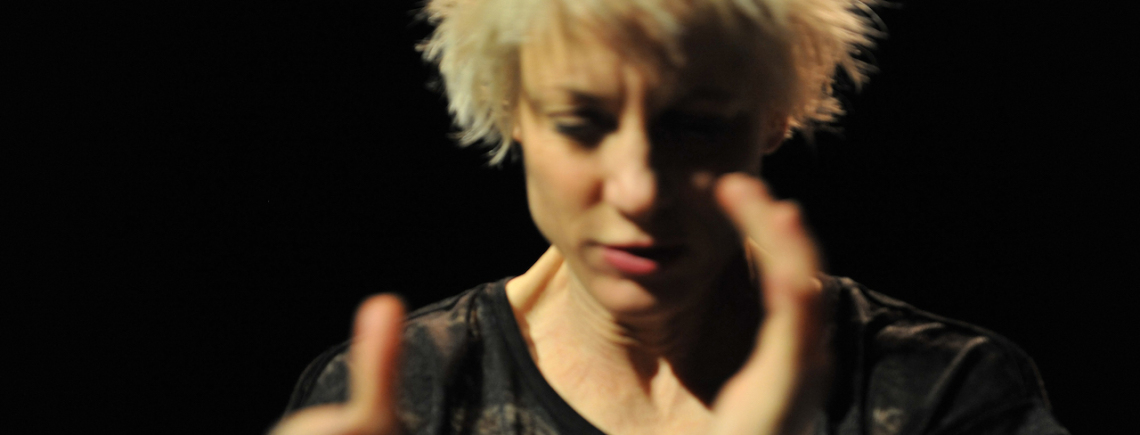
Meg Stuart
An evening of solo works
Co-Presented with Goethe-Institut
and the Federal Foreign Office of Germany
US PREMIERE
Thursday, January 5, 8:30pm
Friday, January 6, 10:00pm
Saturday, January 7, 7:00pm
Run Time: 60 minutes
Abrons Arts Center, Playhouse
466 Grand Street / tickets $20
“How to translate sensations and inner monologues into movement? Is it possible to track the hesitation before speaking, the movements not chosen, the spaces we travel to when we are daydreaming, the memories and projections that cloud our awareness of the present?” – Meg Stuart
In her solo works, Meg Stuart ventures into the monologue of movement, exploring everyday gestures, physical conditions and emotional states through improvisation. An evening of solo works presents a selection of Stuart’s body of solo works including XXX for Arlene and Colleagues (1995) and Signs of Affection (2010), as well as excerpts from evening-length performances. The evening offers an intimate and telling exposure to an American ex-pat, critically acclaimed overseas and rarely seen in the US.
An evening of solo works is produced by Damaged Goods (Brussels). Meg Stuart & Damaged Goods are supported by the Flemish Government and the Flemish Community Commission. Performances of An evening of solo works for American Realness 2017 are presented in collaboration with, and generously supported by the Goethe-Institut and the Federal Foreign Office of Germany.
Photo by Giannina Urmeneta Ottiker

Choreography and performance – Meg Stuart
Technical direction – Oliver Houttekiet
Light – Gilles Roosen
Sound – Vincent Malstaf
Tour manager – Annabel Heyse
Production – Damaged Goods (Brussels)
Meg Stuart, Born in New Orleans, is an American choreographer and dancer who lives and works in Berlin and Brussels. As a daughter of theatre directors, she began dancing and acting at an early age in California and regularly performed in her parents’ productions and those made by family friends. She made her first dance studies as a teenager focusing on simple movement actions. Stuart decided to move to New York in 1983 and studied dance at New York University. She continued her training at Movement Research where she explored numerous release techniques and was actively involved in the downtown New York dance scene.
Invited to perform at the Klapstuk festival in Leuven (1991), she created her first evening-length piece, Disfigure Study, which launched her artistic career in Europe. In this choreography, Stuart approaches the body as a vulnerable physical entity that can be deconstructed, distorted or displaced but still resonates and has meaning. Interested in devising her own structure through which to develop artistic projects, Stuart founded Damaged Goods in Brussels in 1994. Damaged Goods is a flexible, open structure that facilitates the production of highly diverse projects and interdisciplinary collaborations. Meg Stuart and Damaged Goods have created a wide range of productions, from solos to large-scale choreographies, site-specific creations, installations and improvisation projects.
Stuart strives to develop a new language for every piece in collaboration with artists from different creative disciplines and navigates the tension between dance and theatre. The use of theatrical devices, in addition to the dialogue between movement and narrative, are recurrent themes in her choreographies. Stuart’s choreographic work revolves around the idea of an uncertain body, one that is vulnerable and self-reflexive. Through improvisation, she explores physical and emotional states or the memories of them. Her artistic work is analogous to a constantly shifting identity. It constantly redefines itself while searching for new presentation contexts and territories for dance. Meg Stuart/Damaged Goods has an on-going collaboration with Kaaitheater (Brussels) and HAU Hebbel am Ufer (Berlin). Invited by intendant Johan Simons, Meg Stuart and Damaged Goods collaborate with the Ruhrtriennale from 2015 until 2017. In 2016- 2017, Meg Stuart/Damaged Goods is touring BLESSED (2007), VIOLET (2011), An evening of solo works (2013), Hunter (2014), UNTIL OUR HEARTS STOP (2015) and Shown and Told (2016), a collaboration with Tim Etchells.
“No one can accuse her of being faint-hearted. Meg Stuart has always been a risk taker, and will always be aesthetically unpredictable.” – Dorion Weickmann, tip Berlin
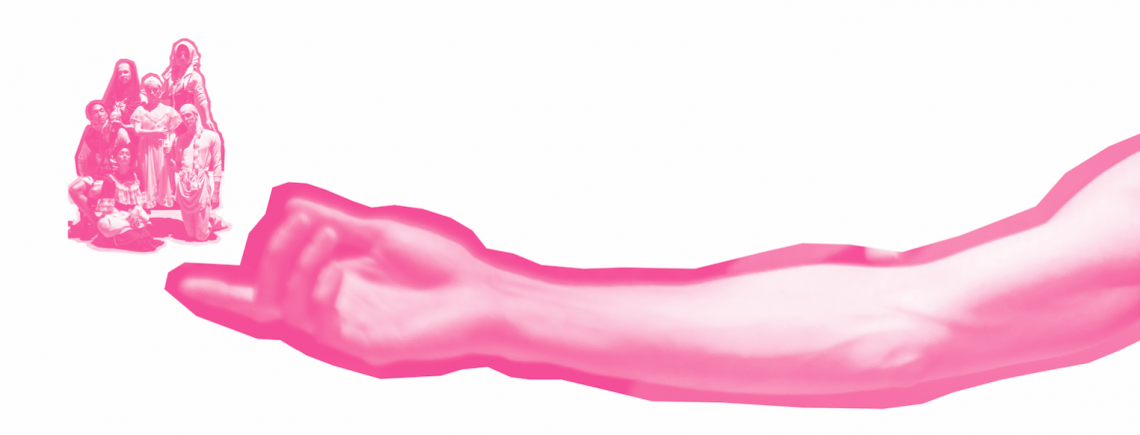
On Visibile Invisibility and Queer Ecstatic Futurity
American Realness is fantasy and reality.
A location in the imagination and physical events in time and space. The festival was created in partnership with Abrons Arts Center in New York City in 2010 to call attention to the proliferation of choreographic and performative practices transcending the history of “lights and tights” in American dance, popularized throughout Europe by iconic choreographers Merce Cunningham and Trisha Brown. In its creation, American Realness served as an alarm call for the recognition of new aesthetic, somatic and performative practices complicating the expectations and histories of dance, theater and performance.
The alarm was heard around the world.
Now, seven years after its creation, American Realness travels to France for the first time, exploding its context with adventurous partners in Centre national de la danse (Pantin), Les Subsistances (Lyon) and Théâtre Garonne (Toulouse). Together we present seven projects across three cities between March 11 and April 13, 2016.
But what does it mean? How are we to understand this context and these works in another country with a different culture, its own social codes, aesthetic priorities and canonical histories?
American Realness signals different contextual readings.
The term “realness” comes from communities of color who created the Voguing Ballroom scene born in Harlem in the 1960s and later popularized though Jenny Livingston’s 1991 film Paris is Burning. Realness is coined in relationship to “passing” as something that you are not. It signifies an extremely successful form of self-presentation and performed authenticity. With the festival, we consider realness with this same relationship to the performativity of personhood and identity or character as employed through a lens of contemporary dance and performance. How are these artists constructing themselves and our shared reality in the performance experience? Often the space between reality and theatrical construction remains slippery, tenuous and thinly veiled. This tension and uncertainty in our reading of authenticity creates a heightened sense of engagement for the audience, forcing them to work through their experience.
Realness also functions as a signifier for the underfunded nature of American artists in relationship to their international peers, particularly in Western Europe. Here realness serves as acknowledgment that there is more frequently a “do-it-yourself,” raw aesthetic employed in American work. Making it work with what they have. Artists keeping it real.
Since its founding American Realness has worked with an agenda to make space for the marginal, both socially and artistically. The festival is intentionally non-mainstream; still it establishes a larger profile for the work.
Outside the foundation of realness, there are other thematic, ideological and aesthetic currents running through each festival’s composition. American Realness for dance2016 highlights “visible invisibility” and “queer ecstatic futurity.”
Visible Invisibility
refers to the work of Dana Michel, keyon gaskin and Ligia Lewis. Each of these artists employs radically different formal and theatrical strategies as frameworks for explorations of communication, context, and visibility in relationship to black identity, the art historical cannon and the global contemporary performance circuit. In each instance, the artist is simultaneously presenting and withholding aspects of themselves in their construction of our shared experience.
Dana Michel’s Yellow Towel dismantles stereotypes of black identity by interrogating ideas and objects that hold “blackness”. Throughout the work Michel withholds her gaze, rarely if ever making eye-contact with the public. With an alternative gaze, Michel keeps her audience captivated and engaged. This indirect communication establishes a heightened curiosity and invites a deeper inquiry from our viewing experience. She creates space for transformation.
keyon gaskin’s its not a thing is an anti-theatrical solo performance problematizing trends in contemporary performance. With the work gaskin poses questions around the “multifarious nature of care and opacity.” He undermines the roles of performer and spectator, challenging our rules of engagement. The work is a punk gesture. It is not your typical theatrical experience and that is the point.
Ligia Lewis takes the idea of invisibility a step further. With Sorrow Swag, she removes herself from the work, setting the solo on performer Brian Getnick. The piece uses texts by Beckett and Anouilh to address race, gender and sadness. The work operates with a rich and sensual theatricality offering a saturated experience of light and sound. While what is presented on stage is a lonely and iconic white male figure, much of the material of the work is derived from the deconstruction of black masculinity, raising questions of authorship, authenticity, perception and the assumed fixity of identity.
American Realness for dance2016 sets these works in conversation with each other and the public to complicate and compliment their readings in this context.
Queer Ecstatic Futurity
refers to the work of Simone Aughterlony, Antonija Livingstone and Hahn Rowe, Miguel Gutierrez and Trajal Harrell as they present alternative imaginings of our past, present and future.
In Supernatural, Aughterlony, Livingstone and Rowe create a landscape of ecstatic queerness through a terrain of “vibrant matter.” They wield axes, chop wood, and sling ropes across an electronic sound environment. The artists create a hyper-sensorial present where physical and gestural manifestations of gender construction are decimated through urgent expression and ecstatic communion.
Trajal Harrell’s Twenty Looks or Paris is Burning at The Judson Church: THE SERIES, from it’s beginning in 2009, shined a light on the voguing ballroom scene, realness, and their relation to postmodern dance history. With The Ghost of Montpellier Meets the Samourai Harrell looks toward a new imaginary historical meeting to construct a present and future of new possibilities.
Through Age & Beauty Part 1: Mid-Career Artist/Suicide Note or &:-/ and DEEP AEROBICS aka Death Electric Emo Protest Aerobics, Miguel Gutierrez is inviting, inspiring and demanding alternative constructions of contemporary society. What we know is queered into something new, provocative and expansive. Gutierrez is a practitioner of direct address, ecstatic improvisation and seductive charisma. These works present visually sophisticated worlds where hyper-ecstatic presence and participation plunge us into our capacity to see our world differently and create something new for ourselves and each other.
Take a dose of Realness
Through visceral, visual, and text-based explorations of perception, sensation, form and attention, the artists of American Realness for dance2016 expose issues and questions around identity, ritual, blackness, history, queerness, pop-culture, and futurity in an American-focused, globally-minded context. American Realness exposes the cracks in the façade: of the practice of art making; of the construction of contemporary society; of our increasing inability to practice authenticity.
It is a privilege and an honor to assemble and present the work of these visionary artists with adventurous partners and audiences across the ocean. American Realness for dance2016 is an opportunity to open your mind, shift your context, practice generosity, attention and exchange. Reclaim the reins. Rewrite the narratives. Thank you for participation. Practice Realness.
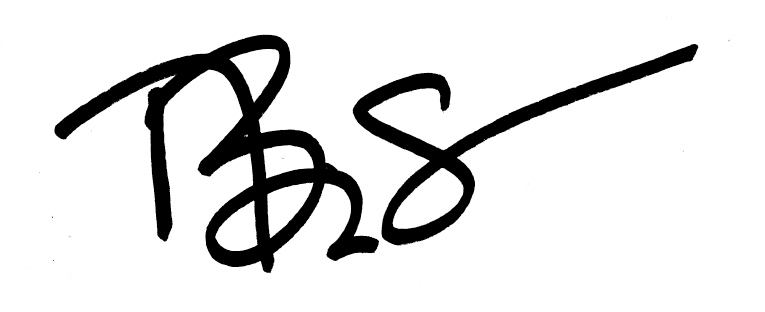
Thomas Benjamin Snapp Pryor
Founder, Curator & Producer
American Realness
___________________________________________________________________________________________________
AMERICAN REALNESS entre Imaginaire et réalité.
Un lieu ancré dans l’imaginaire ; des événements ancrés dans l’espace-temps. American Realness a été créé à New York en 2010 en partenariat avec l’Abrons Arts Center. Ce festival veut rendre visible la multiplication de pratiques chorégraphiques et performatives défiant la tradition des «Lights and Tights » (lumières et collants) de la danse américaine popularisée dans toute l’Europe par des chorégraphes emblématiques tels que Merce Cunningham et Trisha Brown. Le festival Américan Realness a tiré le signal d’alarme et permis de faire reconnaitre de nouvelles esthétiques, de nouvelles expériences physiques ou chorégraphiques ajoutant à la complexité des critères régissant la dance, le théâtre et les arts du spectacle traditionnels.
Le signal d’alarme a résonné dans le monde entier.
Sept ans après sa création, American Realness traverse l’Atlantique pour la première fois avec l’aide de partenaires tels que leCentre national de la danse (Pantin), Les Subsistances (Lyon) et Théâtre Garonne (Toulouse). Ensemble, nous présenterons sept projets à travers la France du 11 mars au 13 avril 2016.
Qu’est-ce que cela racontera ? Comment ces œuvres seront reçues et comprises dans un pays ayant une culture, des codes sociaux, des priorités et des canons esthétiques différents?
American Realness propose de lire le monde autrement.
Le terme « realness », que l’on pourrait tenter de traduire par authenticité en français, trouve ses origines dans le mouvement Voguing Ballroom apparu dans les années 60 à Harlem. Il a été créé par les minorités noires et hispaniques de l’époque. Le mouvement est alors rendu populaire en 1991 avec la sortie du film de Jenny Livingston Paris is Burning. Ce mot, realness, a été choisi car il évoque cette faculté à incarner un personnage que l’on n’est pas… tout en y mettant beaucoup de soi-même. Il est une manière extrêmement brillante de se présenter qui révèle d’une certaine authenticité. Ce festival, de la même manière, tente d’explorer cette notion de realness et d’identité au travers du prisme de la danse et de la performance.
Comment ces artistes au travers de leurs performances, se construisent-ils eux-mêmes et construisent-ils le monde que nous partageons avec eux. Bien souvent, l’espace entre la réalité et la mise en scène est glissant, fragile, à peine dissimulé. La tension et l’incertitude générées par le sentiment d’authenticité que le public prête aux pièces crée chez lui une possibilité forte de projection personnelle le poussant à revivre ou à faire ses propres expériences.
Realness sert également de symbole pour les artistes américains si peu subventionnés face à leurs homologues internationaux, en particulier leurs homologues issus du l’Eueope du l’ouest. À cet effet, realness rappelle qu’il est plus fréquent de voir, dans cet art contemporain américain, des œuvres d’une esthétique à l’état brut, générées par une mentalité de « do it yourself » et d’indépendance du travail. On fait avec les moyens du bord, en maintenant son intégrité.
Depuis sa création, American Realness veut créer un espace pour faire exister les marges qu’elles soient artistiques ou sociales. Le festival se veut délibérément « underground » même s’il offre une couverture très médiatisée aux œuvres qu’il présente.
Au-delà de ses fondements, le festival realness explore également d’autres thématiques. American Realness for dance2016 souhaite explorer les thèmes « la visibilité invisible” et le « queer ecstatic futurity ».
La visibilité invisible
Cette notion fait référence aux travaux de Dana Michel, keyon gaskin et Ligia Lewis. Chacun de ces artistes emploie des stratégies formelles et théâtrales radicalement différentes. Ces stratégies servent de cadre pour explorer des questions de communication, de contexte et de visibilité en relation avec l’identité noire, les canons esthétiques historiques et le circuit de la performance contemporaine mondiale. Dans chaque cas, les artistes présentent et retiennent des aspects d’eux-mêmes dans la construction de notre expérience commune.
Dans Yellow Towel de Dana Michel, l’artiste détruit les stéréotypes associés à l’identité noire en interrogeant les objets qui l’incarnerait. Durant la pièce, Dana Michel a le regard fuyant, et ne regarde que rarement, si ce n’est jamais, son public dans les yeux. Cependant, elle captive l’attention. Elle suscite par cette absence une curiosité et un questionnement, elle attise notre curiosité, propice à la transformation.
Le solo de keyon gaskin intitulé its not a thing va à l’encontre de la mise en scène théâtrale. Il remet ainsi en question les codes de la performance contemporaine. Dans son solo, gaskin soulève des questions concernant “la nature polymorphe des soins et de l’opacité.” Il conteste les rôles endossés par le perfomer et son public, défiant ainsi les règles du spectacle. Son œuvre est un geste punk, elle n’a rien d’une expérience théâtrale typique, ce qui en fait tout l’intérêt.
Ligia Lewis pousse loin les barrières de l’invisibilité. Dans Sorrow Swag, elle s’extrait de son œuvre pour mettre en scène un solo dont Brian Getnick est l’interprète. La pièce utilise des textes de Beckett et d’Anouilh pour aborder les questions de race, de genre et d’exclusion. Ce solo se dévoile avec une théâtralité riche et sensuelle, offrant une expérience saturée en lumière et en son. Bien que l’interprète incarne une figure solitaire de l’homme blanc, la matière de cette pièce est tirée d’une tentative de déconstruire l’idée d’une certaine masculinité de l’homme noir et pose des questions sur le réel, la perception et la réalité soi-disant immuable de l’identité.
Les pièces au programme d’American Realness for dance2016 sont des dialogues entre les artistes et leur public qui interrogent et complexifient ce que chacun peut lire du monde.
Queer Ecstatic Futurity
Les œuvres de Simone Aughterlony, Antonija Livingstone & Hahn Rowe, Miguel Gutierrez et Trajal Harrell explorent des révisent nos vues sur notre passé, présent et futur.
Dans Supernatural, Aughterlony, Livingstone & Rowe créent un environnement « extatique queer ». Ils manient la hache, coupent le bois, dans un univers sonore saturé de musique électronique. Les artistes créent un espace présent hyper-sensible où les manifestations physiques et corporelles de la construction du genre sont décimées par une grande urgence artistique d’où semble émaner de nouveaux champs de possibles.
Avec la sortie de Twenty Looks or Paris is Burning at The Judson Church: THE SERIES, Trajal Harrell, dès 2009, popularise le Voguing, le mouvement realness et la relation que ces deux courants entretiennent avec l’histoire de la danse post moderne, tandis que The Ghost of Montpellier Meets the Samourai d’Harrell explore une rencontre imaginaire historique visant à recréer des nouvelles possibilités présentes et futures.
Dans Age & Beauty Part 1: Mid-Career Artist/Suicide Note or &:-/ and DEEP AEROBICS aka Death Electric Emo Protest Aerobics, Miguel Gutierrez interroge, invite, inspire et demande une nouvelle construction de la société contemporaine. Ce que l’on perçoit est détourné en quelque chose de nouveau, provocateur et plus vaste. Gutierrez s’adresse au public de façon directe, il improvise de façon extatique et fait preuve de charme et charisme. Ses œuvres nous proposent des univers visuellement très sophistiqués, dans lesquels sa présence nous donne la capacité de voir le monde différemment et d’imaginer un nouvel univers.
Prenez une dose de Realness
Grâce à des explorations intimes, visuelles, et textuelles de la perception, de la sensation, de la forme et de la réalité, les artistes américains de Realness for dance2016 soulèvent des questions autour de l’identité, du rituel, de la question noire, de l’histoire, de la question queer, de la culture pop et de l’avenir dans le contexte américain. American Realness met en lumière les lacunes de la création artistique, de l’édification de la société contemporaine et de notre incapacité croissante à incarner une certaine authenticité.
C’est un honneur de rassembler et de présenter devant le public français le travail de ces artistes visionnaires avec l’aide de nos partenaires. Realness for dance2016 est l’occasion d’ouvrir nos horizons et de favoriser l’échange. Prenons les devants. Réécrivons l’histoire. Nous vous remercions pour votre participation. Pratiquons le Realness.

Thomas Benjamin Snapp Pryor
Founder, Curator & Producer
American Realness
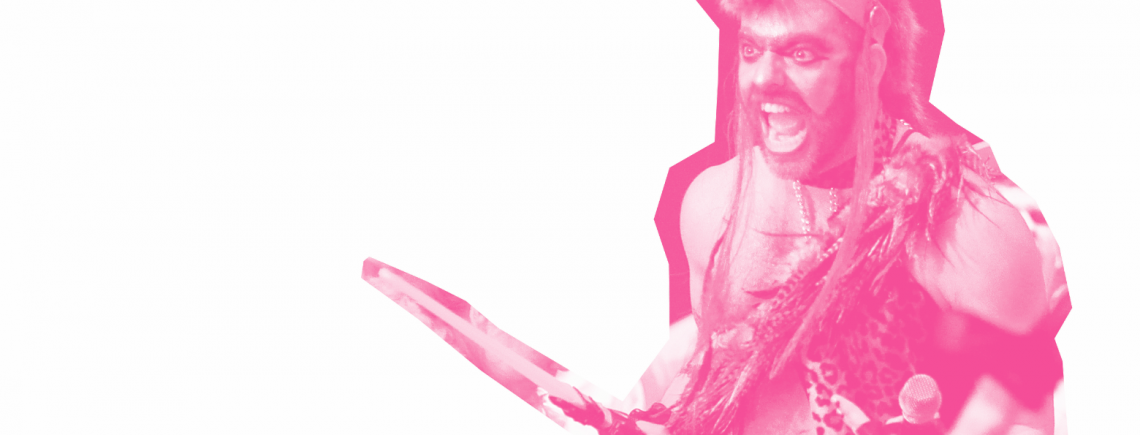
Miguel Gutierrez
DEEP AEROBICS
April 3, Les Substances, Lyon France
April 9, Centre national de la danse, Pantin France
Death Electric Emo Protest Aerobics aka DEEP AEROBICS is a workout form invented and shamelessly disseminated by New York-based choreographer Miguel Gutierrez. It is one hour plus of the communal/political/conceptual/imaginational workout experience you always wanted but never could embarrass yourself enough to find or do in public. It is for anyone who has ever had any interest in combining the joie de vivre that is the vigorous bouncing of one’s anatomical/spiritual/ energetic molecules with the existential absurdity that is living in a world/country/economic system of injustice, war-mongering, and cultural ineptitude. DEEP AEROBICS is a participatory spectacle – it’s a movement, it’s a transformative experience for the mind/body/spirit/genital matrix. Gutierrez asks that each participant come in costume. Please push your imagination beyond the 80’s! Stylists will be present with materials for on-site costume adjustments as necessary.
___________________________________________________________________________________________________
DEEP AEROBICS (pour Death Electric Emo Protest Aerobics). L’aérobic absurde de Miguel Gutierrez est au-delà de la chorégraphie et de la technique ! Il vous propose un entraînement collectif avec vos plus beaux collants en lycra, bandeaux pailletés et attributs les plus déjantés, tendance queer mâtinée de Véronique et Davina.
Une heure de tubes pour la meilleure – et peut-être la seule – leçon d’aérobic de votre vie. Si vous venez, vous dansez que vous ayez n’importe quel âge, n’importe quelle condition physique : l’important c’est l’enthousiasme, l’envie de rire et d’entrer dans cet étrange rituel qui revendique la joie de vivre et l’envie de contester ensemble !
Entrée gratuite mais venez déguisés, et poussez votre imagination au-delà des années 80 !
Photos by Pekka Mäkinen
Created by Miguel Gutierrez
Miguel Gutierrez creates performances known for their weaving of dance, song, text and use of emotion as a conceptual and choreographic driver. He uses the conceits of theater – character, dramaturgy, costume, light – to engage and structure persistent questions about the search for meaning. His work joins a legacy of process-focused experimental dance while drawing on influences such as endurance-based performance art, noise music, ecstatic experience in social and religious rituals, the study of mind-body somatic systems, and various histories of spectacle including Broadway and queer club performance. Gutierrez says that his work is “philosophical inquiry disguised as performance.”
His pieces include freedom of information (2001), enter the seen (2002), I succumb (2003), dAMNATION rOAD (2004), Sabotage (with Jaime Fennelly 2001-2004), Retrospective Exhibitionist and Difficult Bodies (2005 Bessie Award), myendlesslove (2006, remounted in 2013), Everyone (2007), Nothing, No thing (2008), Last Meadow (2009 Bessie Award), HEAVENS WHAT HAVE I DONE (2010), And lose the name of action (2012) and Storing the Winter (2012, with Mind Over Mirrors). His most recent piece Age & Beauty Part 1: Mid-Career Artist/Suicide Note or &:-/ premiered as part of the 2014 Whitney Biennial. He has created work for Philip Adams’ Melbourne, Australia based company BalletLab, Sydney, Australia based collaborative trio The Fondue Set and San Francisco based artist Fauxnique.
His work has been presented by venues such as American Realness in NYC, Festival D’Automne and the Pompidou Centre in Paris, ImPulsTanz in Vienna, Festival Universitario de Danza Contemporanéa in Colombia, Walker Art Center in Minneapolis, MCA Chicago, PICA’s TBA Festival in Portland, the Flynn Center in Burlington and the Brooklyn Academy of Music. He has received fellowships from the Guggenheim Foundation, Foundation for Contemporary Art, United States Artists, Lambent Foundation, and New York Foundation for the Arts, as well as support from MAP Fund, Jerome Foundation, Creative Capital, and the NEA. He has been an artist in residence at Fisher Center for the Arts at Bard College, MANCC, LMCC, Baryshnikov Arts Center, CCN Montpellier (France), and Mount Tremper Arts.
He received an additional Bessie Award for his work as a dancer in John Jasperse Company. He has choreographed and performed in music videos for Diane Cluck, Holcombe Waller and Le Tigre (which went viral and produced various copycat videos), has performed as a singer with Justin Vivian Bond, Nick Hallett, Antony and the Johnsons, Vincent Segal, and Holcombe Waller, and has released a self produced EP under the moniker The Belleville. He leads workshops in his approach to creative practice all over the world. He is a current faculty member of Hollins University’s MFA dance program and NYC’s Movement Research.
His book WHEN YOU RISE UP is available from 53rd State Press. He invented DEEP AEROBICS, an absurdist workout, which most recently has been used to warm up audiences for The Knife. He is training to become a practitioner of the Feldenkrais Method. His newest piece, Age & Beauty Part 2: Asian Beauty @ the Werq Meeting or The Choreographer & Her Muse or &:@& premieres in the 2015 AMERICAN REALNESS Festival at Abrons Arts Center in NYC. In addition he is working on a collaborative project with choreographer Alex Ketley based on their travels throughout the American south where they met and interviewed strangers and performed for them. www.miguelgutierrez.org
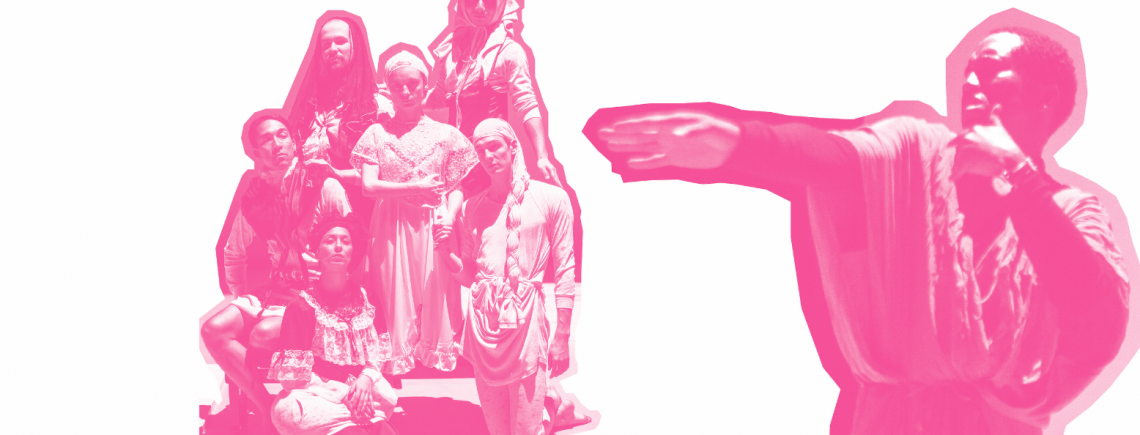
Trajal Harrell
The Ghost of Montpellier Meets the Samurai
April 8 & 9, Théâtre Garonne, Toulouse, France
With The Ghost of Montpellier Meets the Samurai, Harrell invents a new meeting of historical figures, promising surprising choreographic explosions. Two legends of contemporary dance serve as a pretext for an irreverent tribute that integrates elements of stand-up, fashion runway vaunts, and breathtakingly executed choreography mixing high modernism with romanticism and a street/club sensibility. The ghost of Montpellier might be Dominique Bagouet, France’s renowned figure of 1980s Nouvelle Danse; the samurai might be Tatsumi Hijikata, the founding father of the experimental Japanese dance form butoh—but this dance is full of surprises. The Ghost… invites itself—and you—into a reimagined dreamlike contemporary dance history.
___________________________________________________________________________________________________
Trajal Harrell a commencé par enflammer les scènes américaines puis européennes avec une série de “danse-fiction” : décliné en plusieurs tailles et sur plusieurs années, son Paris is Burning télescopait les expérimentations conceptuelles de la Postmodern Dance et les poses lascives du Voguing, issu de la culture underground afro-américaine et latino. Avec The Ghost, Harrell entame une nouvelle série et invente une rencontre encore plus improbable – et qui promet autant de déflagrations chorégraphiques. Le fantôme de Montpellier, c’est Dominique Bagouet, figure de la Nouvelle Danse dans les années 80 ; Le samouraï, c’est Tatsumi Hijikata, père du butô. Deux légendes de la danse contemporaine, prétextes à un hommage pour le moins irrévérencieux et à une performance électrisante : sur le plateau, la grâce et l’énergie de cette famille de danseurs sont proprement sidérantes. Accueillie en résidence à Garonne avant d’être créée à Montpellier Danse en juin 2015, la nouvelle production du New Yorkais s’invite dans l’histoire de la danse contemporaine : mais une histoire rêvée…
The Ghost of Montpellier Meets The Samurai is a coproduction of Festival Montpellier Danse 2015, Festival d’Automne 2015, Centre Pompidou (Paris), Hau Hebbel am Ufer (Berlin), Théâter Garonne (Toulouse), Walker Arts Center (Minneapolis), New York Live Arts, and King’s Fountain. Residency support has been provided by Montpellier Danse L’Agora, Centre national de la danse (Pantin), Monty (Antwerp), Centre national de la danse contemporaine under the direction of Emmanuelle Huyhn (Angers). Funding Support has also be provided by French US Exchange in Dance (FUSED), Creative Capital, and The New England Foundation for the Arts’ National Dance Project, with lead funding from the Doris Duke Charitable Foundation and The Andrew W. Mellon Foundation, with additional support from the National Endowment for the Arts.
Photo by Orpheas Emirzas
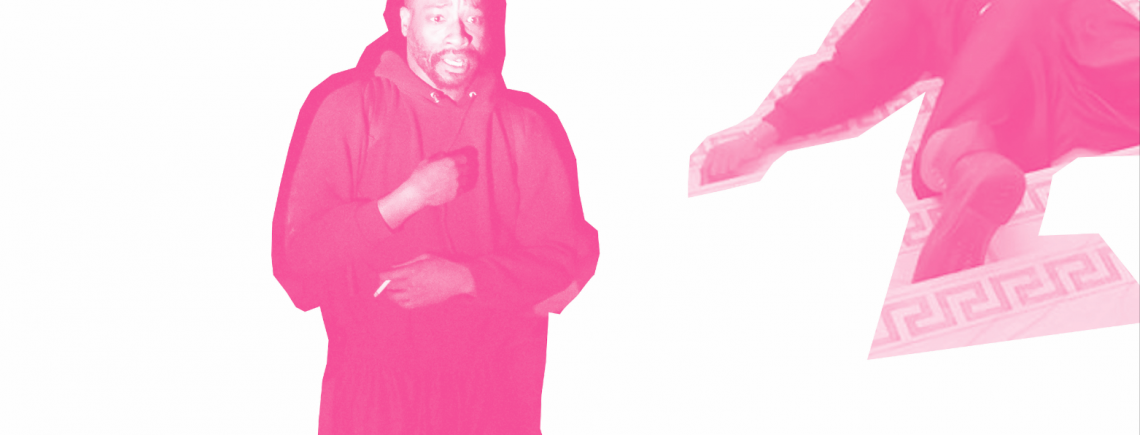
keyon gaskin
its not a thing
April 7 & 8, Centre national de la danse, Pantin, France
keyon gaskin prefers not to contextualize their performances with their credentials.
___________________________________________________________________________________________________
keyon gaskin préfère ne pas contextualiser ses performances par us texte de présentation ou des références biographieques.
Photo by Ian Douglas & Robert Duncan Gray
Created and Performed by keyon gaskin
keyon gaskin prefers not to contextualize their performances with their credentials.
“They were waiting for closure, but the man didn’t deliver. It should have been expected – it’s not a thing, remember? But no matter how hard Keyon Gaskin tries to make his performance not a thing, “its not a thing” is somehow the most captivating thing in town. The only remaining question is what exactly “its not a thing” is.” -Jamie Hale, The Oregonian
“Gaskin holds together a deliriously bizarre persona, swinging wildly from demanding action on the part of the audience to desperately pleading for it, from posturing bravado to shaking vulnerability, and from slapstick to self-harm.”
- Thomas Ross, The Portland Mercury
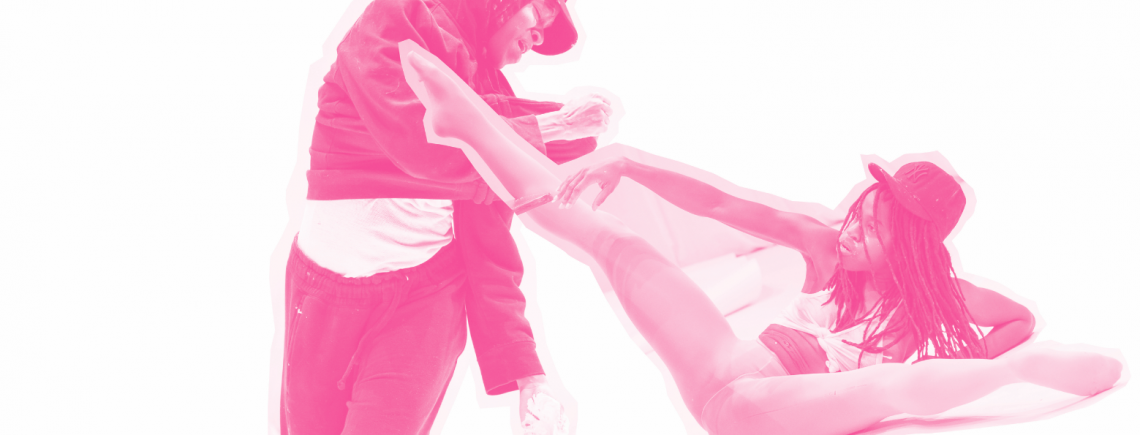
Dana Michel
Yellow Towel
April 2 & 3, Les Subsistances, Lyon, France
April 8 & 9, Centre national de la danse, Pantin, France
April 23 & 13, Théâtre Garonne, Toulouse, France
As a child, Dana Michel would drape a yellow towel on her head in an attempt to emulate the blonde girls at school. As an adult, she now revisits the imaginary world of her alter-ego in a performative ritual free of cover-ups or censorship. Blending austerity and absurdity, she digs into black culture stereotypes, turning them inside out to see whether or not she can relate. We witness her allowing a strange creature to emerge from this excavation in a slow and disconcerting metamorphosis that we follow with fascination.
___________________________________________________________________________________________________
Enfant, Dana Michel coiffait ses cheveux d’une serviette jaune (yellow towel) pour ressembler aux blondinettes de son école. Aujourd’hui, elle revisite son imaginaire enfantin et ressuscite sur scène cet être hybride, monstre né des frustrations et stéréotypes de la culture noire, qu’elle détourne dans une danse tour à tour grave et bouffonne. Peu à peu la créature étrange se métamorphose, le fantasme se dissipe, un être apparaît dans la blancheur dépouillée du plateau… Un fascinant numéro de transformisme chorégraphique, qui révèle les failles d’une société à mesure qu’il dévoile les éclats d’une jeune artiste à suivre.
Yellow Towel was co-produced in Montréal by Festival TransAmériques and Studio 303 and was developed through residencies at Compagnie Marie Chouinard, M.A.I., Usine C, Circuit-Est centre chorégraphique, Studio 303 , Agora de la Danse and Le Chien Perdu (Brussels). The creation of Yellow Towel was additionally supported by Conseil des Arts et des Lettres du Québec, Canada Council for the Arts, Cirque du Soleil Cultural Action program and M.A.I.. Dana Michel receives development and administrative support from Daniel Léveillé danse (Montréal, Canada) as part of its sponsorship project.
Photos by Ian Douglas
Dana Michel: Yellow Towel from Marin Media Lab on Vimeo. Yellow Towel (trailer) from BAND OF BLESS on Vimeo. choreography, performance, set and costume design by Dana Michel *merci to the fta and to studio 303 for the nice big push. to my hand-holders/mind-spankers/idea-helper-to-makers: mathieu, peter, ivo, antonija, manolis, karine – yes. thank you darlings. a very special thank you to david drury, michael MAI toppings, silvy panet-raymond and yves sheriff for their additional advice, support and insight. a very very special thank you to my way more than just production assistants, heidi louis and chad dembski. a ridiculously large thank you to the little person who somehow seems very at the origin and future of yellow towel, mr. roscoe michel. Dana Michel (choreographer/performer) is a choreographer and performer based in Montreal, Canada. Before studying contemporary dance at Concordia University in her late twenties, she was a marketing executive, competitive runner and football player. In 2011, She had the honour of being a danceWEB scholarship recipient, allowing her to deepen her research process at ImPulsTanz in Vienna, Austria. Her work has toured through North America (Montreal, Quebec, Toronto, Ottawa, Boston, Salt Lake City and New York City) and Europe (Austria, Belgium, Serbia & Switzerland) over the past six years. Dana’s work has garnered numerous awards including the Montreal Fringe Festival “Best Dance Production” in 2005, the Globe and Mail’s “Best Emerging Choreographer” in 2006, and a “Top Ten Choreographers” listing by the Montreal Mirror newspaper in 2007, 2008 and 2009. The film version of her solo the greater the weight won the jury prize for the best performance at the InShadow International Festival of Video, Performance and Technologies in Lisbon. Michel’s newest solo, Yellow Towel, premiered at the Festival TransAmériques in Montreal to critical acclaim and featured on the “Top Five” and the “Top Ten” dance moments in the Voir newspaper (Montreal) and Dance Current Magazine (Canada) respectively. “Michel… is a killer soloist who tackles the warped, frenetic and fierce rhythms of her piece with precision and fiery authority…” (Eva Yaa Asantewaa, InfiniteBody (NYC), 2007) http://danamichel.ca/ “Michel embarks on a performance that is richly textured, full of nuance and shift: this is a study of a human soul. When she does speak with words the sentences are dotted with random thoughts that seem like external manifestations of internal monologue and dialogue. She’s working on the detail of the sound, how to stress a word, the meaning of the rhythm of what’s said. It’s fascinating territory.” “Unflinchingly, Dana Michel offers an abrasive, edgy performance in Yellow Towel. Using lifetimes of black social isolation, withdrawal and imagination, she lures you in. It’s a gut punch steeped in stereotypes of black culture, echoing imbalance and a lively contrariness, and infused with attitude. Michel is making work like nobody else.” “Yellow Towel is weird, insightful and hilarious without resorting to predictable contrivances. It achieves a state of imbalance that is revelatory.” “The performer is prodigious in this tragico-burlesque portrait in which her out-of-tune body is developed in a series of tableaux that let meaning emerges from slowness. This show is very personal and deliciously funny in an offbeat way. It confirms the talent of an artist who refuses to compromise and dares to invent her own language.” (translated) “At the premiere of this courageous performance, the public was very receptive, some spectators seeming however to be somewhat astounded by these uncharted grounds. But all can learn to interpret this abstract language. Dana Michel reaches for an essence that is inherently primal to human beings and that everyone can relate to. The first viewers of Jackson Pollock’s paintings must have had a similar feeling; the impression of being in front of the explosion of an incredible new movement.” (translated)
lighting design by Karine Gauthier
artistic advisors Ivo Dimchev, Peter James, Mathieu Léger, Antonija Livingstone & Manolis Tsipos
sound consultant David Drury
executive producer Marie-Andreé Gougeon for Daniel Léveillé danse
production assistants Heidi Louis & Chad Dembski
coproduction Festival TansAmériques & Studio 303
creative residencies Compagnie Marie Chouinard + MAI + Le Chien Perdu (Brussels) + Usine C + Circuit-Est centre chorégraphique + Studio 303 + Agora de la Danse
with the support of OF Conseil des Arts et des Lettres de Quebec + Canada Council for the Arts + Cirque du Soleil Cultural Action program + MAI
administrative support Daniel Léveillé danse company (Montréal, QC) as part of its touring sponsorship project
Premiered at Festival TransAmériques, May 24, 2013
By Philip Szporer, The Dance Current, Published May 31, 2013
By Philip Szporer, The Dance Current, Published December 16 2013
By Alex Lazaridis, Real Time Arts, Published July 2013
By Philippe Couture and Elsa Pépin, Voir Montreal, Published May 31 2013
By Ariane Cloutier, Mon(theatre), Published May 26 2013
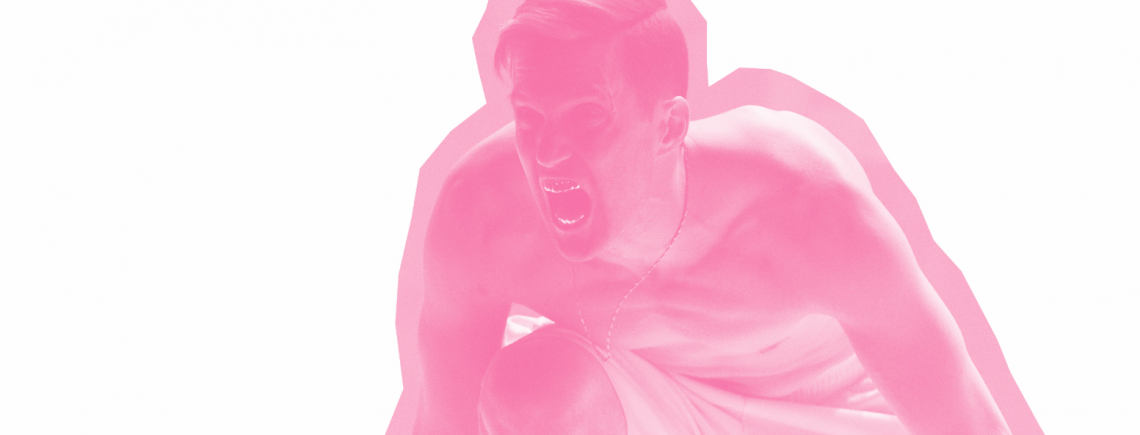
Ligia Lewis
Sorrow Swag
April 1 & 2, Les Subsistances, Lyon, France
April 7 & 9, Centre national de la danse, Pantin, France
April 12 & 13, Théâtre Garonne, Toulouse, France
Sorrow Swag takes race and melancholy as points of departure for an experience that unfolds through the language of sadness. Performed by Brian Getnick with live musical accompaniment by George Lewis Jr. of Twin Shadow, the performance uses texts and images derived from mid-century classical theater (Beckett and Anouilh) to interrogate race, authorship, gender, and grief. Sorrow Swag disrupts the canonical by means of an imaginative reformulation that prioritizes sensation. The work takes place in an immersive visual and auditory space and uses color as a synesthetic texture and emotional referent to produce a choreography that engages language, text, affect and embodiment.
___________________________________________________________________________________________________
Les voix du refus et de la résistance à l’ordre imposé peuplent le corps étrange et habité de ce jeune performer qu’est Brian Getnik, originaire de Los Angeles. Ligia Lewis, qui a écrit la pièce pour lui, est née en République Dominicaine et a grandi aux États-Unis. Avec Sorrow Swag, elle nous embarque dans une étrange traversée de sensations, de sons, de visions s’inspirant de Beckett et d’Anouilh, évoquant la tristesse comme une forme de résistance politique aux injonctions de bonheur portées par la société contemporaine. La bande-son a été composée par son frère jumeau le musicien Twin Shadow : la performance – loin d’être nostalgique – est électrique autant que physique, musicale et visuelle.
Sorrow Swag was produced with funding from the Berlin Senat’s Tanzstipendium with further support from Human Resources Los Angeles, ADA Studios Berlin, and a residency at Pieter Space LA. Sorrow Swag is presented in collaboration with, and in part made possible by the generous support of the Goethe-Institut.
Photo by Ian Douglas
Ligia Lewis: Sorrow Swag from Marin Media Lab on Vimeo.
Concept and Choreography by Ligia Lewis
Performed by Brian Getnick
Musical Accompaniment by George Lewis Jr. (Twin Shadow)
Ligia Lewis (DO/US) is a choreographer based in Berlin. Lewis weaves together critical and literary texts with dance and theater as she interrogates the metaphors and social inscriptions of the body. She engages with the choreographic through embodied, sensorial, and immersive performances, with a predilection towards interiority and abstraction. Her choreographies can be described as experientially rich and complex. Lewis has been presented in multiple contexts including visual arts and theater.
Lewis was awarded the Prix Jardin d’ Europe for her work Sorrow Swag at Impulstanz 2015. Minor Matter for the theater is her latest creation in development.
Brian Getnick is a performance maker and sculptor living in Los Angeles. Reconfiguring the physical materials and procedures of theatrical fantasy, Getnick creates performances that engage memory, history, and the absurd in both solo and ensemble works He directs PAM; a residency program and theater for performance makers and co-directs the performance art journal Native Strategies with Tanya Rubbak.
George Lewis Jr. aka Twin Shadow (born 1983), is a Dominican-American singer, producer and writer, based out of Los Angeles, California. He has released one novel and three albums: Forget(2010), Confess (2012) and Eclipse(2015). His latest album is released with major record Warner Music. His music has been met with positive acclaim by the likes of Rolling Stones magazine, Pitchfork, BBC music, NPR music and more.
www.twinshadow.net
“…Lewis’s work is most successful in its insistence that the spare can be made spectacular.
Lewis, a Dominican-born and Berlin and LA-based performer and choreographer, has been working on sadness. Minor Matter follows her Sorrow Swag, shown at HRLA last October, which fuses Jean Anouilh’s translation of Antigone with Billie Whitelaw’s performance of Samuel Beckett’s Not I. Brian Getnick played the amalgam of tragic figures: one buried alive for civil disobedience, the other a lone, hysterical mouth.”

Miguel Gutierrez
Age & Beauty Part 1: Mid-Career Artist/Suicide Note or &:-/
April 1-3, Les Substances, Lyon France
April 7-9, Centre national de la danse, Pantin France
Age & Beauty Part 1: Mid-Career Artist/Suicide Note or &:-/ is the first of a suite of queer pieces Gutierrez is creating over the course of three years that addresses the representation of the dancer, the physical and emotional labor of performance, tropes about the aging gay choreographer, the interaction of art making with administration, the idea of queer time and futurity, and mid-life anxieties about relevance, sustainability, and artistic burnout. Part 1 is a duet for 43-year-old Gutierrez and 24-year-old performer/dancer Mickey Mahar and follows from a packed set of precise unison dances to an irreverent and celebratory corruption of orderliness, suggesting modes of communication and relations where hyper-emotional affect is not only the conceptual and choreographic core of the performance, but also the only hope for continuing in this fucked-up world.
___________________________________________________________________________________________________
Age & Beauty Part 1 : Mid-Career Artist / Suicide Note or &:-/ est la première d’une série de pièces « queer » que Miguel Gutierrez a créée ces trois dernières années. Miguel Gutierrez, 44 ans aujourd’hui, a incarné la relève d’une danse underground new-yorkaise festive, homosexuelle, non-conformiste jouant sur le kitsch, le bigarré mais aussi sur une extraordinaire technique de danseur, chanteur et chorégraphe.
Radical et pop en somme. Cette partie 1 – Notes sur un suicide – magnifique duo avec le jeune danseur Mickey Mahar 25 ans, interroge les particularités des temps queer, l’imbrication entre le mode de vie et la position artistique : il traite sans concession de rêves de gloire et de compromission, de la transformation du corps, de vieillesse et d’amour.
Age & Beauty Part 1: Mid-Career Artist/Suicide Note or &:-/ was commissioned for the 2014 Whitney Biennial and was made possible with support and developmental residencies from the Maggie Allesee National Center for Choreography at Florida State University, the ]domaines[ program at Centre Chorégraphique National de Montpellier Languedoc-Roussillon in Montpellier, France, and Hollins University in Roanoke, Virginia.
Photos by Ian Douglas
Created by MG in collaboration with Mickey Mahar
Music by Jerry Goldsmith, Chuckie and Silvio Ecomo and MG
Text by MG
Set Design by MG with Mickey Mahar
Costume creations by Dusty Childers
Lighting by Lenore Doxsee
Production Management by Sarah Lurie
Management by Ben Pryor/tbspMGMT
Miguel Gutierrez creates performances known for their weaving of dance, song, text and use of emotion as a conceptual and choreographic driver. He uses the conceits of theater – character, dramaturgy, costume, light – to engage and structure persistent questions about the search for meaning. His work joins a legacy of process-focused experimental dance while drawing on influences such as endurance-based performance art, noise music, ecstatic experience in social and religious rituals, the study of mind-body somatic systems, and various histories of spectacle including Broadway and queer club performance. Gutierrez says that his work is “philosophical inquiry disguised as performance.”
His pieces include freedom of information (2001), enter the seen (2002), I succumb (2003), dAMNATION rOAD (2004), Sabotage (with Jaime Fennelly 2001-2004), Retrospective Exhibitionist and Difficult Bodies (2005 Bessie Award), myendlesslove (2006, remounted in 2013), Everyone (2007), Nothing, No thing (2008), Last Meadow (2009 Bessie Award), HEAVENS WHAT HAVE I DONE (2010), And lose the name of action (2012) and Storing the Winter (2012, with Mind Over Mirrors). His most recent piece Age & Beauty Part 1: Mid-Career Artist/Suicide Note or &:-/ premiered as part of the 2014 Whitney Biennial. He has created work for Philip Adams’ Melbourne, Australia based company BalletLab, Sydney, Australia based collaborative trio The Fondue Set and San Francisco based artist Fauxnique.
His work has been presented by venues such as American Realness in NYC, Festival D’Automne and the Pompidou Centre in Paris, ImPulsTanz in Vienna, Festival Universitario de Danza Contemporanéa in Colombia, Walker Art Center in Minneapolis, MCA Chicago, PICA’s TBA Festival in Portland, the Flynn Center in Burlington and the Brooklyn Academy of Music. He has received fellowships from the Guggenheim Foundation, Foundation for Contemporary Art, United States Artists, Lambent Foundation, and New York Foundation for the Arts, as well as support from MAP Fund, Jerome Foundation, Creative Capital, and the NEA. He has been an artist in residence at Fisher Center for the Arts at Bard College, MANCC, LMCC, Baryshnikov Arts Center, CCN Montpellier (France), and Mount Tremper Arts.
He received an additional Bessie Award for his work as a dancer in John Jasperse Company. He has choreographed and performed in music videos for Diane Cluck, Holcombe Waller and Le Tigre (which went viral and produced various copycat videos), has performed as a singer with Justin Vivian Bond, Nick Hallett, Antony and the Johnsons, Vincent Segal, and Holcombe Waller, and has released a self produced EP under the moniker The Belleville. He leads workshops in his approach to creative practice all over the world. He is a current faculty member of Hollins University’s MFA dance program and NYC’s Movement Research.
His book WHEN YOU RISE UP is available from 53rd State Press. He invented DEEP AEROBICS, an absurdist workout, which most recently has been used to warm up audiences for The Knife. He is training to become a practitioner of the Feldenkrais Method. His newest piece, Age & Beauty Part 2: Asian Beauty @ the Werq Meeting or The Choreographer & Her Muse or &:@& premieres in the 2015 AMERICAN REALNESS Festival at Abrons Arts Center in NYC. In addition he is working on a collaborative project with choreographer Alex Ketley based on their travels throughout the American south where they met and interviewed strangers and performed for them. www.miguelgutierrez.org
Mickey Mahar is a dance artist originally from Wisconsin now living and working in New York City. He graduated cum laude with a degree in Women’s Studies from Vassar College in 2012 where he was a member of the Vassar Repertory Dance Theater, performing in works by Paul Taylor, Doris Humphrey and Larry Keigwin among others. Since moving to New York, Mahar has had the pleasure of working with Adrienne Truscott, Gillian Walsh, Ryan McNamara and Miguel Gutierrez, collaborating with Gutierrez on his latest work, Age & Beauty Part 1: Mid-Career Artist / Suicide Note or &:-/, which premiered in New York City as a part of the 2014 Whitney Biennial. His work with these artists earned him a 2014 New York Dance and Performance “Bessie” award nomination as an Outstanding Performer. Mahar was most recently a recipient of the prestigious DanceWEB scholarship at ImPulsTanz, the international dance festival in Vienna, Austria. He is currently collaborating with Viennese directors Adia Trischler and Andreas Waldschuetz on an experimental film installation and working with French choreographer David Wampach on his newest dance piece.
Lenore Doxsee is a lighting designer for theater, opera, and dance. Designs with Miguel Gutierrez include And lose the name of action, Last Meadow (Bessie Award), Retrospective Exhibitionist and Difficult Bodies (Bessie Award), and many others. Other designs for dance include Morgan Thorson’s Heaven and Spaceholder Festival, Devouring, Devouring for Netta Yerushalmy (set design also), and Karen Sherman’s Copperhead and Cold Comfort. Her designs for theater include Target Margin’s The Tempest, Uncle Vanya, and many other productions.
Sarah Lurie is a lighting designer and manager for live performance. Recent credits include: touring lighting director for Mike Birbiglia’s My Girlfriend’s Boyfriend, lighting designer for Colin Quinn’s Unconstitutional (Cherry Lane), A Dream Play (HERE Arts), The Red and the Black (Theatre at St. Clements), The Birthday Party (14th St Y), and stage manager for 2 Kilos of Sea (Baryshnikov Arts Center). www.sarahelurie.com
